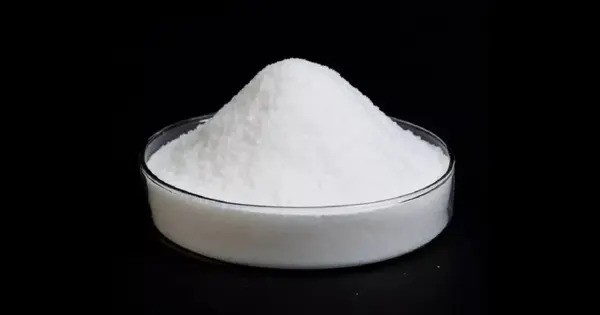Sodium gluconate is a compound with formula NaC6H11O7. It is the sodium salt of gluconic acid, and its molecular structure consists of a glucose-derived backbone with a carboxylate group, making it a chelating agent. It is the sodium salt of gluconic acid. Its E number is E576.
Sodium gluconate is typically a white to off-white, crystalline powder or granules, with a slightly sweet taste. It is odorless and highly soluble in water. This white, water-soluble powder has a wide range of applications across industries.
Originally derived from gluconic acid in the 19th century, Sodium Gluconate is known for its chelating properties and is utilized as a chelating agent in various processes. It finds applications in textile, metal surface treatment, cement, and more. Moreover, its non-toxic nature and biodegradability contribute to its use in environmentally conscious practices.
Production
Sodium Gluconate can be produced through the fermentation process or chemical synthesis. In the fermentation process, glucose is fermented by certain microorganisms, typically strains of Aspergillus niger or Pseudomonas. Gluconic acid is the primary product of this fermentation, and Sodium Gluconate is derived by neutralizing gluconic acid with sodium hydroxide.
Natural Occurrence
Sodium gluconate is a derivative of gluconic acid, which is naturally formed by the oxidation of glucose. It can be produced by microorganisms through fermentation processes, such as the fermentation of glucose with specific bacterial species (like Aspergillus niger or Gluconobacter).
Gluconic acid itself is found in certain fruits, honey, and some fermented products. While the direct occurrence of sodium gluconate in nature is rare, it can be synthesized from the naturally occurring gluconic acid.
Industrial Production
Sodium gluconate is primarily produced through the oxidation of glucose, followed by neutralization with sodium hydroxide. The fermentation process is another common method for producing gluconic acid, which is then converted into sodium gluconate. This production method ensures that sodium gluconate is commercially available for a variety of uses.
Applications
- Water Treatment: It is used to prevent scaling in water treatment systems by chelating calcium and magnesium ions.
- Cleaning Agents and Detergents: It is used in formulations for household cleaners, laundry detergents, and industrial cleaners due to its ability to sequester metal ions that may interfere with cleaning effectiveness.
- Construction: Used in concrete as a dispersing agent, where it helps to reduce water requirements and improve workability, while also increasing the durability of the material.
- Food Industry: It is used as a food additive (E574) in some applications, such as in food and beverages to control acidity or as a stabilizer.
- Cosmetics: It can be found in some cosmetic formulations as a chelating agent to enhance product stability and effectiveness.
















